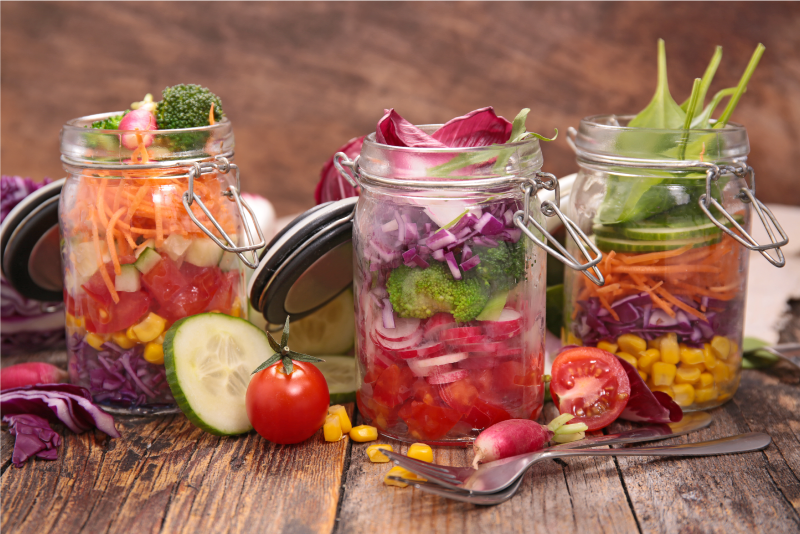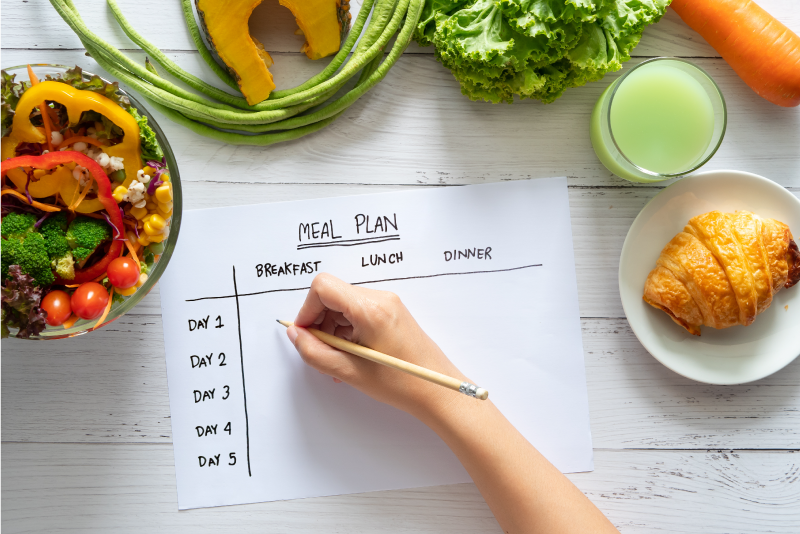
Whether you are working from home, working in office, a busy mom or staying alone, you still need to eat. Eating out daily may not be friendly to your wallet or health. However, meal prepping and cooking requires time and it may be a luxury that some don’t have.
Enter meal prepping; a planning method that simplifies cooking that works around your schedule so you don’t have to scramble through your meal time. Instead, you’ll have time to sit back, relax and even catch your favourite show before heading to bed.
What are the benefits of meal prepping? It saves time and money as you’re preparing homecooked food ahead of time. It’s also healthier as you choose what goes into your food. Here’s what you need to get started.
Invest in quality storage containers
Use glass containers that are airtight to store prepped fruits and vegetables in the fridge. It keeps your ingredients and meals fresher longer and taste better by locking bacteria and odours out.
Get in on the mason jar trend

They are perfect for on-the-go breakfasts like oats and smoothies. You can even pack your salads or soups in them.
Start small
Starting small and slowly building confidence is a great way to make sure your new habit is sustainable. By starting small with just a few meals or snacks for the coming week, you’ll soon figure out which strategy works best in the kitchen and what dishes fit your diet or your family’s taste.
Choose your day
Pick a day to do your meal prepping. The best would be the day you do your groceries as the ingredients are still fresh when it comes to fruits and vegetables.
Make a detailed shopping list
Keep a list so that when you run to the grocery store, you’ll have everything you need. It helps to make the trip to the store quick and efficient.
Plan your meals

Cooking at home is good for your health and your wallet. With a little planning, you can even fit home cooking when you’re busy. The goal is to spend the least time in the kitchen but still get healthy food.
Pick versatile ingredients
Look for ingredients that can pair with a few dishes. For example, roast chicken can be turned into sandwiches, chicken salad or even be used for pasta. Quinoa can be made into a side dish, added into salad or as part of a grain bowl for lunch in office.
Keep basics on hand
Quick-fix foods like rice, dried pasta, canned tuna, frozen veggies and fruits are great to keep around the house as they make it easier to throw something together when you’re too busy to shop for groceries. Nuts and seeds, washed greens, hard boiled eggs and chopped fruit can be turned into a quick salad or snack when you’re feeling peckish.
Make extra and portion it out
If you’re cooking a large recipe, portion it into ready-to-go single servings. This can help save time during the week. You can make big batches of soups, stews, broths and pasta sauces and just add them for your noodles and pasta days.
Stay organized
Lastly, once you have everything prepped and packed, don’t forget to label the containers with the contents and date to keep track of their freshness. Place the food that goes bad faster in front so you don’t forget about them.
Happy cooking!
